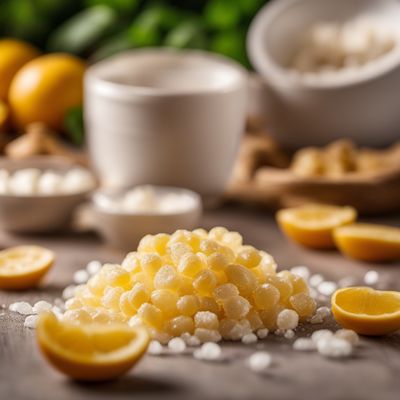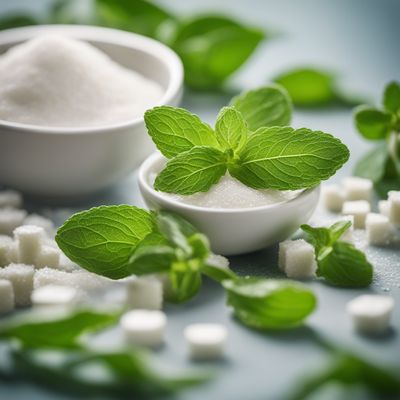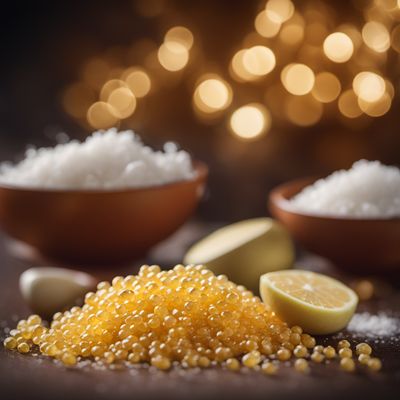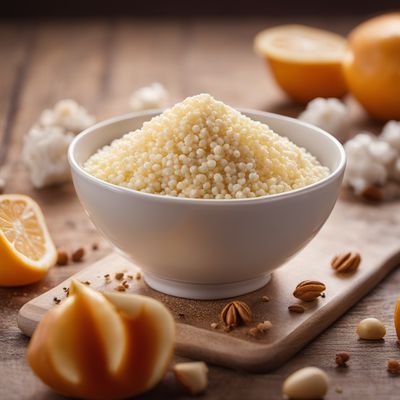
Ingredient
Saccharine
"The Sweet Secret: Unveiling the World of Saccharine"
Saccharine is a white, crystalline powder that is approximately 300-500 times sweeter than sugar. It has a distinct, sweet taste without any bitter aftertaste. The texture of saccharine is fine and powdery, easily dissolving in both hot and cold liquids. Its appearance resembles granulated sugar, but with a more concentrated sweetness.
Origins and history
Saccharine was first discovered in 1879 by a chemist named Constantin Fahlberg. It was accidentally synthesized while he was working on coal tar derivatives. Since then, saccharine has been widely used as a sugar substitute, especially during times of sugar shortages, such as during World War I and World War II. Its popularity grew in the mid-20th century as a low-calorie alternative to sugar.
Nutritional information
Saccharine is a zero-calorie sweetener, making it an attractive option for individuals looking to reduce their calorie intake. It does not contain any significant nutrients.
Allergens
Saccharine is generally considered safe for consumption and does not pose any known allergenic risks.
How to select
When selecting saccharine, look for reputable brands that are approved by regulatory authorities. Check the packaging for any signs of damage or tampering. Additionally, ensure that the expiration date is not expired.
Storage recommendations
Store saccharine in a cool, dry place away from direct sunlight. It is best to keep it in an airtight container to prevent moisture absorption and maintain its quality.
How to produce
Saccharine is a synthetic sweetener that is produced through chemical processes in a laboratory. It is not feasible for amateurs to produce saccharine at home.
Preparation tips
Saccharine can be used as a sugar substitute in various recipes, including beverages, baked goods, and desserts. It is important to note that saccharine is much sweeter than sugar, so it is recommended to use it in smaller quantities. Start with a small amount and adjust to taste. It is also advisable to dissolve saccharine in a small amount of liquid before adding it to recipes to ensure even distribution.
Substitutions
Suitable substitutes for saccharine include other artificial sweeteners like aspartame, sucralose, or stevia. Each of these substitutes has its own unique taste and sweetness level, so it is important to adjust the quantity accordingly.
Culinary uses
Saccharine is commonly used as a sugar substitute in various food and beverage products, including diet sodas, sugar-free candies, and low-calorie desserts. It can also be used in homemade jams, jellies, and sauces.
Availability
Saccharine is widely available in most grocery stores, supermarkets, and online retailers, making it easily accessible to consumers worldwide.
More ingredients from this category

Advantame
The Sweet Sensation: Advantame

Thaumatine
The Natural Sweetener

Acesulfame k
The Sweet Secret: Acesulfame K

Neotame
The Sweet Secret: Neotame

Steviol glucoside
The Natural Sweetener of the Future

Sucralose
The Sweet Secret

Aspartame
The Sweet Science: Unveiling the Secrets of Aspartame

Neo-hesperidine
The Bitter-Sweet Marvel: Unveiling the Wonders of Neo-hesperidine

Cyclamate
The Sweet Side of Cyclamate